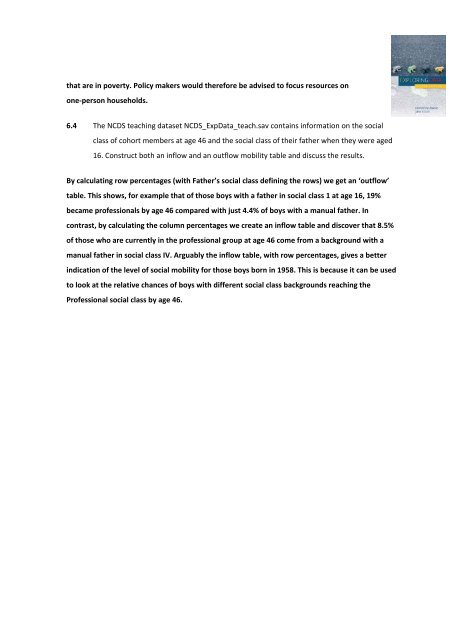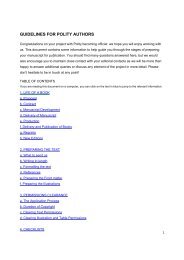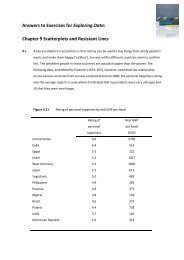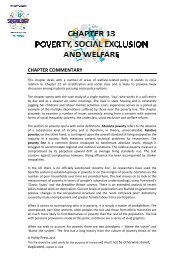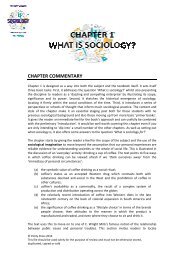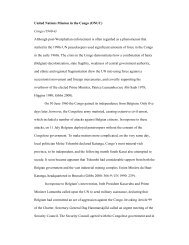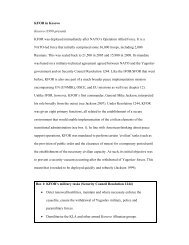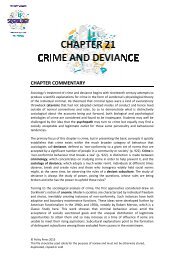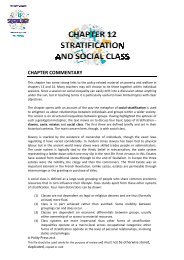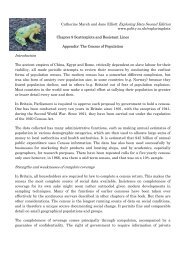Chapter 6 Percentage Tables - Polity
Chapter 6 Percentage Tables - Polity
Chapter 6 Percentage Tables - Polity
Create successful ePaper yourself
Turn your PDF publications into a flip-book with our unique Google optimized e-Paper software.
that are in poverty. Policy makers would therefore be advised to focus resources on<br />
one‐person households.<br />
6.4 The NCDS teaching dataset NCDS_ExpData_teach.sav contains information on the social<br />
class of cohort members at age 46 and the social class of their father when they were aged<br />
16. Construct both an inflow and an outflow mobility table and discuss the results.<br />
By calculating row percentages (with Father’s social class defining the rows) we get an ‘outflow’<br />
table. This shows, for example that of those boys with a father in social class 1 at age 16, 19%<br />
became professionals by age 46 compared with just 4.4% of boys with a manual father. In<br />
contrast, by calculating the column percentages we create an inflow table and discover that 8.5%<br />
of those who are currently in the professional group at age 46 come from a background with a<br />
manual father in social class IV. Arguably the inflow table, with row percentages, gives a better<br />
indication of the level of social mobility for those boys born in 1958. This is because it can be used<br />
to look at the relative chances of boys with different social class backgrounds reaching the<br />
Professional social class by age 46.


